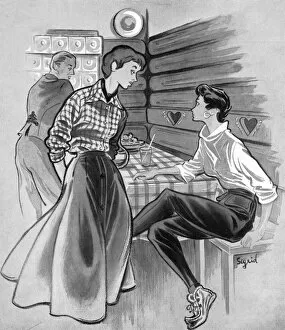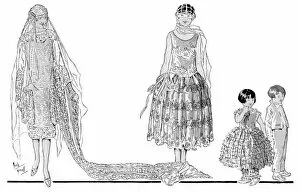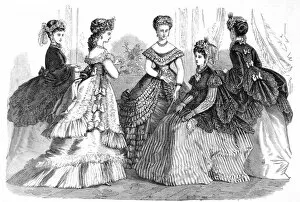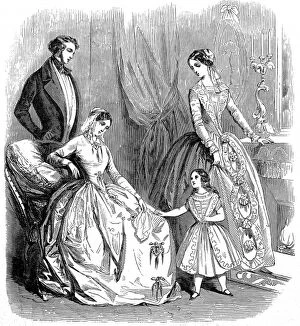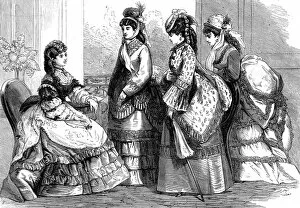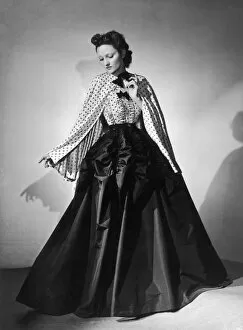Taffeta Collection (#5)
Taffeta, a timeless fabric that has graced the world of fashion for centuries
For sale as Licensed Images
Choose your image, Select your licence and Download the media
Taffeta, a timeless fabric that has graced the world of fashion for centuries. In 1954, it was at the forefront of fashions, with designers like Victor Stiebel creating stunning dresses that showcased its beauty. Two types of dresses emerged - one exuding elegance and sophistication, while the other embraced playfulness and youthfulness. Looking back to 1788, we see a woman in a ball gown adorned with a mask, showcasing taffeta's versatility even then. Fast forward to Eva Lutyens' fashion design in 1954; she effortlessly combined taffeta with silk ruffles to create an enchanting ensemble. In 1924, Gorringes advertised women's bathing dresses and capes made from this exquisite fabric. It seems that taffeta not only graced grand occasions but also found its way into swimwear. The Marquise de Pezay and the Marquise de Rougewith Her Sons Alexis and Adrien were captured in history wearing ball gowns made from coral taffeta embellished with delicate silk ruffles – epitomizing opulence. Even underwear had its moment with taffeta in 1962 when Barbara Hulanicki drew designs featuring this luxurious material. The allure extended beyond outer garments. Parisian fashionistas have always been ahead of their time when it comes to style. In November 1864, they flaunted breathtaking creations crafted from this magical fabric on the streets of Paris. Let us not forget about the craftsmanship behind every piece. Weaving taffeta silk ribbons required skill and precision as seen in Patterson New Jersey USA where artisans dedicated themselves to perfecting this art form. Through the ages, whether worn by royalty or everyday individuals seeking elegance, it has remained an emblem of grace and refinement. Its shimmering texture continues to captivate hearts worldwide as it did back when Charles Beauclerk, the Duke of St.

